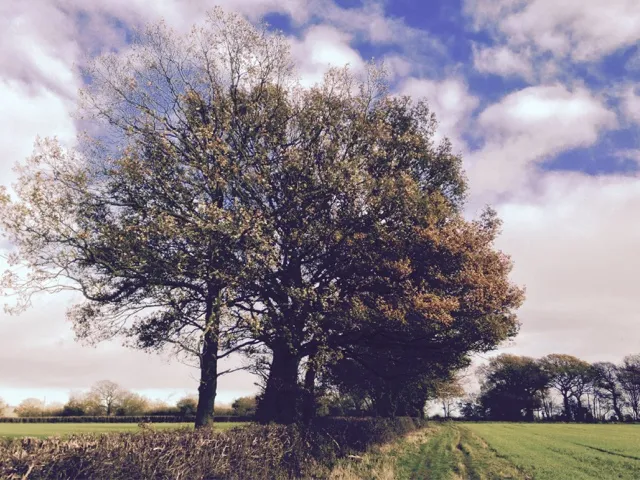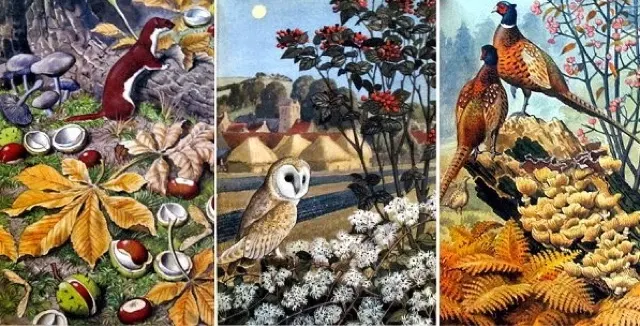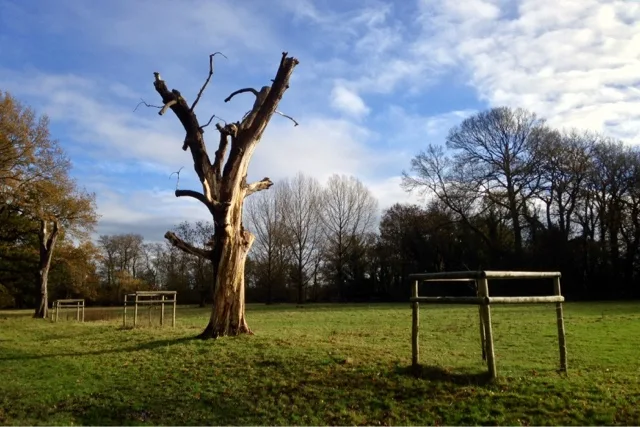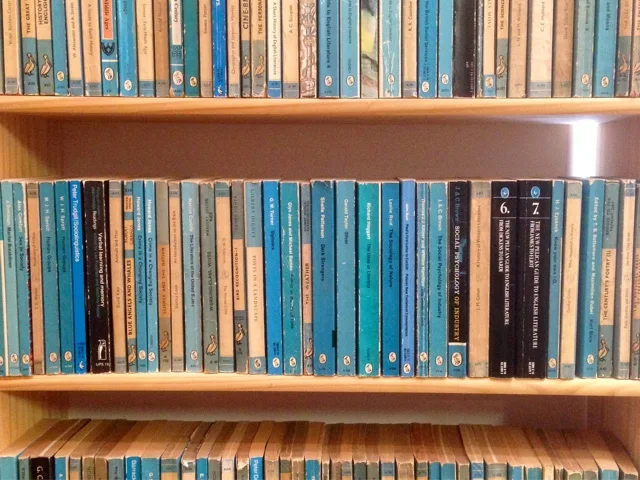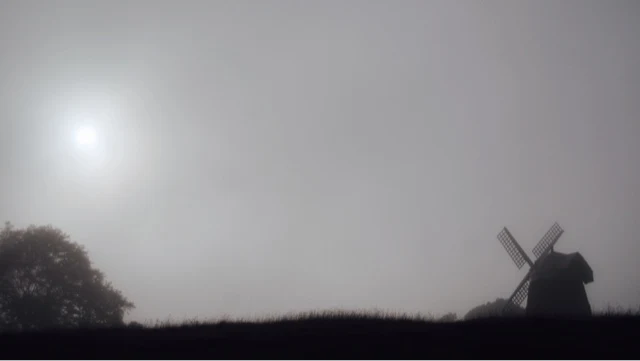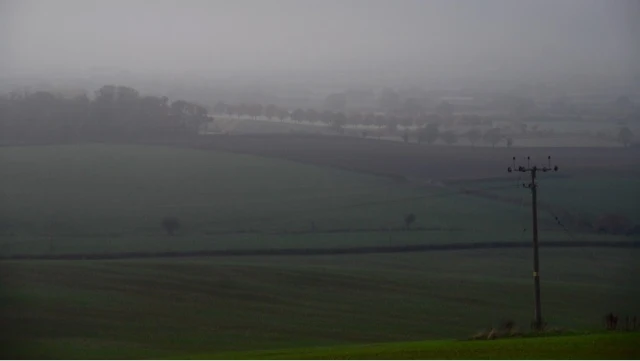The unabashed melodiousness of Brahms is without apology.
I like to imagine Brahms wandering around Europe – or even just the Red Hedgehog Tavern – almost permanently singing. Strangely enough, his gruff baritone sounds exactly like mine! (Probably because his figure is not dissimilar.) Seriously, though: I can think of no other composer who wrote such gorgeous, memorable, all-encompassing melodies – not even my beloved Elgar (who, it could be argued, is Brahms’ natural successor).
All week, therefore, in anticipation of last night’s Cheltenham Symphony Orchestra concert in the Town Hall, the opening horn call (delicately wafted into the air by Laura Morris – and subsequently recapitulated perfectly by Kelly Haines) of his Second Piano Concerto – and all its ensuing high-contrast, explosive variations and developments – has been echoing through my head (as well as bouncing off the walls of the Bardic halls). This tune is, essentially, a short, simple thing (appearing as a rising tilde in the score) – which is where its power indubitably lies. But what the aging (‘mature’) composer does with it is nothing short of miraculous: not least the initial arpeggiated, ascending response from the piano (played warmly by the inimitable Peter Donohoe).
However easily lulled you may be by that gentle beginning, you are soon awoken by a cadenza (already! at bar 11!) manufactured from some of the most turbulent, breathtaking Sturm und Drang I can think of. (All those octaves in the right hand I think explain Donohoe’s comment, below.) Although this detonation soon recapitulates the main theme as a short-lived ground bass – and the orchestra then takes over – it is not long before the thumb-bashing returns: albeit after a few fortunate pages’ rest!
So – believe me: I tried and failed to learn to play it; and it nearly killed my hands (and the rest of me) – even though the work has been described as “really a symphony with principal piano” – this is, I think, one of the most outrageously challenging pieces in the solo pianist’s repertoire: “the perfect fusion of inspirational fire with… encompassing technique” – which, thankfully, of course, Donohoe, genial genius, has in abundance. He makes it look (relatively) easy – even those infernal, eternal trills. (Although I suspect he is actually the owner of an extra pair of hands – which may well really belong to Martin Roscoe – such is his wizardry.)
It was the last work Brahms added to his repertory as a pianist, and for someone who had long given up regular practicing to get through it at all is amazing.
Some of the orchestral tutti chord sequences in this first movement even foreshadow those of Shostakovich (see below) with their impudent might – although this may just be a trick of consistent orchestra-scape and canny programming – and yet this is truly beautiful music: albeit with a heart of sharpest diamond. And there is nothing playful at all, either, about the second movement (which tonight featured a breathtaking stop-on-a-sixpence moment from the violins…). “It is a tiny, tiny little concerto with a tiny, tiny little scherzo” wrote Brahms. (Ha‑ha.)
But the work never stops punching you in the guts with its emotional impact, aided by Donohoe’s majestic, ringing, virtuousic keyboard playing. His partnership (which it truly was) with conductor David Curtis and the CSO rendered it a monumental spiritual assault. And, like the Shostakovich that followed – after the well-needed interval – it features a killer third movement: “the slow movement that Rachmaninoff tried all his life to write” – where, temporarily, the cello (beautifully, hauntingly bowed by Andrea Harries: who received rapt, delighted attention from the generous Donohoe) takes the limelight: with what would later become the song Immer leiser wird mein Schlummer (‘Ever gentler grows my slumber’). Personally, I think Brahms constructed this movement so that the pianist would at least have a few moments in which to plunge their hands into a bucket of ice; or for the trainer to come on to the pitch with a magic spray and a few plasters. (Donohoe is too noble and gifted to require such things.)
[By the way, if you want to know just what a “challenge” this work really is (and not just for my clumsy paws): then I would suggest that you read this tremendous account by Stephen Hough – one of the greatest (and most modest) performers I have been lucky to witness – as well as this marvellous interview with French pianist Philippe Bianconi.]
The last movement – regardless of what anyone-else may tell you; and despite the hint of Hungarian dance rhythm and final march (again heading towards Shostakovich territory) – superbly controlled by maestro Curtis – completes the concerto perfectly. It is what the preceding three movements insistently lead to – it is what is needed… – a romantic, rhapsodic meditation on all that has gone before. It may not contain quite the huge number of previous fireworks: but there are moments where the piano’s bass pulses through the soles of your feet, before the treble gives your heart and head a damn’ good work-out. You have to cheer – especially with a performer as subtle and powerful as Donohoe… – as you really, really wanted to do at the end of the Allegro non troppo and Allegro appassionato, of course. You simply have no option.
And here he rewarded our enthusiasm – demonstrating his finely-tuned prowess once more – with a highly intelligent, but deeply soulful, engrossing encore: exhibiting what I know to be a rare (and valuable) combination of insight and fluid technique. [For the life of me, although I recognized it, I cannot dig deep enough into my fading brain to retrieve its composer or title. If you know, please get in touch! Thank you. (I have now been informed – by a certain Peter Donohoe… – that “The encore was Mozart's Fantasia in D Minor K397”. Many thanks! This was genuinely beautiful playing….)] He also crept into the audience after the interval – a rare and thoughtful act….
The B-flat Concerto dates from the start of Brahms’ ripest maturity, the period when his fame had reached a peak throughout Europe and his physical image as we know it best was fixed: bearded and corpulent.
Whilst the Brahms – one of the greatest Late Romantic ‘symphonies’, by last night’s reckoning – can prove hazardous for the piano soloist; Shostakovich’s Fifth Symphony provokes and questions the abilities of each and every member of any orchestra that dares confront it. Here, though, these readily-tarnishing challenges were transformed into golden opportunities – and the CSO explored the very heights of proficiency, authority and exultancy – giving rise to one of the greatest orchestral performances I have experienced. (And I write this – humblebrag alert… – having been around the world; and having witnessed many of the greatest musicians of the last fifty years….)
This is no extravagance; no overstatement. The music breathed. And therefore every single person who contributed to tonight’s astonishing achievement should be immensely proud of themselves. This was musicianship of the very highest order – from the conductor to the clarinets; the brass to the bass drum; the piccolo to the piano. (It is just so sad that the hall was only half-full. I am pretty sure we all knew how utterly blessed we were, though….)
From the symphony’s opening battle between the lower and the upper strings and its soaring melodies, to the sounds of hopeless oppression and finally to the triumph of the human spirit, Shostakovich brilliantly captures the conflicting moods of a time, place and people.
– Marin Alsop: Power And Struggle In A Soviet Symphony
It would be all too easy, at least on the surface – especially considering the (parodic) startling re-entry of the triumphal (but threatening) brass in the last movement (with a rising three-note motif that echoes Brahms’ welcoming call – although this time in the minor: depressing that final note…) – to believe that, in writing his Fifth Symphony, Shostakovich had capitulated to Stalin’s directives in producing grandiose music to support his evil dictatorship: demonstrating the supposed superiority of the mighty Russian Bear during the godawful ‘Great Terror’. However, there is – right from the warlike get-go; its call to arms – and at its deep, deep, lyrical, tortured heart – what Peter Gutmann describes as “the clash between stifling ideology and irrepressible creative impulse”:
According to Stalin, music had to inspire and unite the Soviet people with uplifting messages. His taste was simplistic, but his power absolute. The Pravda party newspaper… branded Shostakovich an enemy of the people and condemned his work as chaotic, vulgar and perverted…. He was snubbed, performances of his works were cancelled and his career seemed over. Yet, he soon found a constructive cure for his pain…. He plunged into work on a new, more traditional symphony. There would be no mistaking its purpose. Shostakovich titled it “An Artist’s Creative Response to Just Criticism” and announced its program as “the stabilization of a personality of a man with all his experiences”. He proclaimed: “There can be no greater joy for a composer than… having assisted by his works in the elevation of Soviet musical culture… to contribute to the growth of our country”. When presented in celebration of the 20th anniversary of the Revolution, it was acclaimed a masterpiece, embracing the soul of the Russian people.
The composer initially described the finale as “resolving the tragically tense impulses of the earlier movements into optimism and the joy of living”. But, later, he rechristened it “a false optimism created under a threat” – akin to the “sadistic torture of being forced to smile while being beaten” – and implied that Stalin was “too dense to see through [his] parody and satire”: not realizing the “deeper and sardonic musical truth” (which, surely, to modern audiences – with the symphony’s industrial, weaponized brass section; satirical marches; and pleading, lyrical melodies – is so blatant that it cannot be ignored…).
I think it is clear to everyone what happens in the Fifth. The rejoicing is forced, created under threat, as in [Modest Mussorgsky’s opera] Boris Godunov. It’s as if someone were beating you with a stick and saying, “Your business is rejoicing, your business is rejoicing”, and you rise, shaky and go marching off, muttering, “Our business is rejoicing, our business is rejoicing”. What kind of apotheosis is that? You have to be a complete oaf not to hear that. People who came to the premiere of the Fifth in the best of moods wept.
– Solomon Volkov: Testimony: The Memoirs of Dmitri Shostakovich
The crux of that weeping, for me (and, I suspect, for many others), is the brass-less Largo, which “is the work’s emotional core” – “one of the most despairing pieces of music ever written, a memorial for Mother Russia and all those sent to the labour camps”. And, although this exquisitely-scored lament uses themes from the preceding two movements, I think it is as close to the surface, and as close as you can get, to reading Shostakovich’s true intent: his fear and agonized despondency – even his hatred.
I agree: “there are no words” for last night’s rendering of this. All I need write is that I closed my eyes; and let the music immerse me in the inevitable purity of sorrow; the inescapable sobs gently washing and wracking my face…. The pace was perfect; as were the dynamics. I will jump to the end, therefore, and just say that those concluding ethereal harmonics from the harp are tough enough – for both audience and orchestra – without the following building Blitzkrieg chord from the full forces of the brass, woodwind and timpani which set off that last, knife-twisting lurch toward death. Thankfully, Curtis paused.
Here, in the coda, he then once more showed his shrewdness – and fulfilled his desire to “always tell a story” with the music – in finding a middle way between the ‘traditional’ fast and triumphal European dash to glory; and the more Russian, slow, tragic and disintegrating weariness. What we experienced was therefore no victory parade – hollow or otherwise. On the weekend of the Stop the War protests and the Climate Change March, these hammered, screaming, repeated chords felt like a forced procession to the scaffold for the whole of humanity.
Like the Brahms concerto that preceded it, this confrontational, testing symphony could be by no other composer. (The works share an expertise in orchestral technique and exploitation – for want of a better word – that is almost unsurpassable. And yet they are Germanic chalk and Soviet cheese in their differences: despite their parallel, emotive appearances and similar dynamic oscillations.)
Pardon my Cyrillic: but Shostakovich’s Fifth, with its gradual, initially deceptive, relentless urge – especially in this performance – builds to such a ball-kicking climax that it is sometimes hard to breathe. (The Brahms achieves such damage in a markedly discreet and more riverlike way.) As it progresses, the symphony swings from gentle massage to such exquisitely-timed assault that you may also find yourself – as I did – almost panting with the inflicted pain. It is tragedy of the most heart-piercing kind – a “long arc… of a bittersweet, aching intensity” – and I do not envy those who have to perform it – although the CSO, under the tight helmsmanship of an obviously emotionally-wrought Curtis – were sensational in their pure and sure commitment.
At least we in the audience had the release of tears, and the comfort of our handkerchiefs. All these poor musicians could do was play on through the terrifying, harrowing, inferno. (Even when Shostakovich appears to be lightening up a little – or even taking the mickey – he is nothing less than intensely serious in his aims and methods. And it shows. (I think the same can be said of Curtis, below, by the way.))
Earlier in the week, Curtis had said to me that “after the Shostakovich, I’ll need a stiff drink”. (Only one…?!) And so did I. This was music that really, really hurt – but in a good, masochistic, cleansing sort of way. (Oh, the power of a good tune…!) But, although he headed homeward for “a stiff gin and tonic” (there must be a musician’s punchline in there, somewhere…!), a thick, dark coffee had to suffice for me (albeit tinged with brandy) – otherwise this review would simply have been one very sharp, climactic expletive.
By the way (just to lighten things up a little): the concert began with a warm-up overture – again, as the programme notes told us, “Three arresting brass chords open the piece… they symbolize a vow of vengeance” – by some obscure ‘Joe Green’ bloke. (Thank you, Dad!) I’ve never really liked Verdi – apart from the heavenly Requiem (it’s great to sing; and features some muscular timpani and bass drum parts…) – but this was entertaining enough!
What it did achieve – seriously and melodiously – was to set the stage for the themes of agonizing tragedy and false triumphalism – the magnificent and dramatic “forces of destiny” – which followed. If Brahms paints paradise, Shostakovich hollows out for us the horrors of hell on earth. Both of which have left me utterly wrecked. Wow.
The moon emerged from behind the earlier storm-clouds to guide me home. I did not want the glow of my iPhone to compete; nor the sound of anything to disturb the now-Russian melodies entangling themselves in my overwhelmed brain. This music of “thought-provoking programming” and formidable skill will stay with me for a very long time. And yet I still must luxuriate in its vigorous freshness. For as long as I possibly can. Thank you; and good night….















